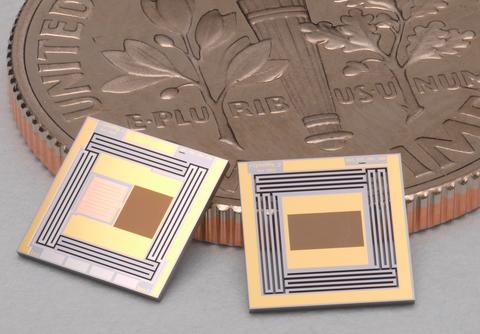
This mite of a sensor just showed its forensic might. Researchers at Los Alamos National Laboratory used the NIST sensors shown here to demonstrate a highly sensitive forensic technique on debris from a historic nuclear explosion.
The world’s first nuclear test, on July 16, 1945, near Alamogordo, New Mexico, was a vital step toward the culmination of the Manhattan Project and the end of World War II. The test left trinitite in its wake, a green, glassy human-made mineral.
In a new study, part of a series showing the connection between science from 75 years ago and today’s nuclear energy and technology, the researchers measured the composition of a small bead of trinitite using decay energy spectroscopy (DES).
Here’s how DES works: Embedded with a gold foil inside a radioactive sample, the absorber of a super-sensitive thermometer heats up. The sensitive thermometer (in this case, NIST’s superconducting sensors) measures the temperature change and energy, based on the increase in resistance of a superconducting film.
Unlike conventional methods, DES helped the researchers identify three different forms of plutonium in a small trinitite bead. With further development, the researchers expect the technique to be a valuable tool for forensic analysis.
Follow us on social media for more like this from all across NIST!

